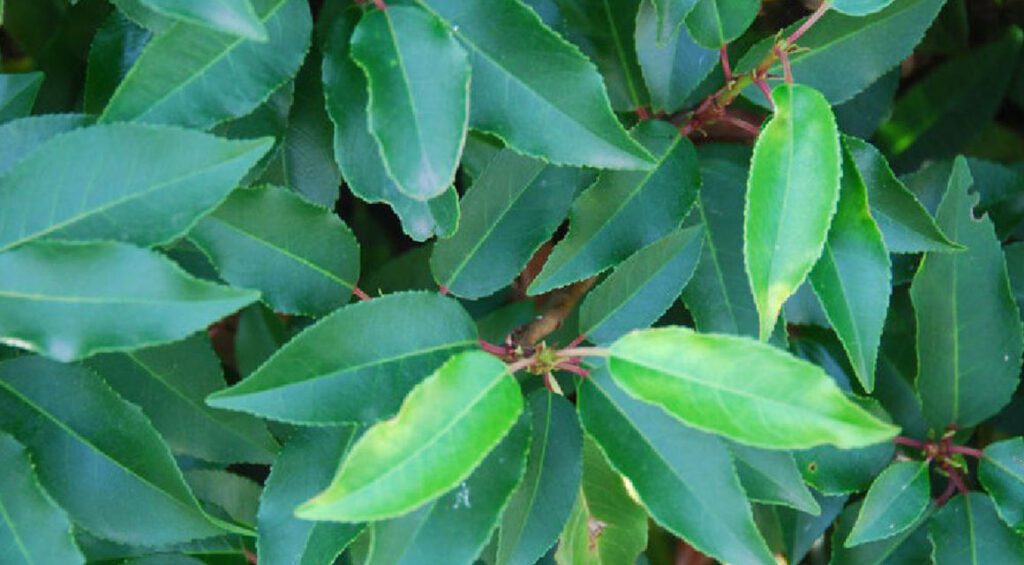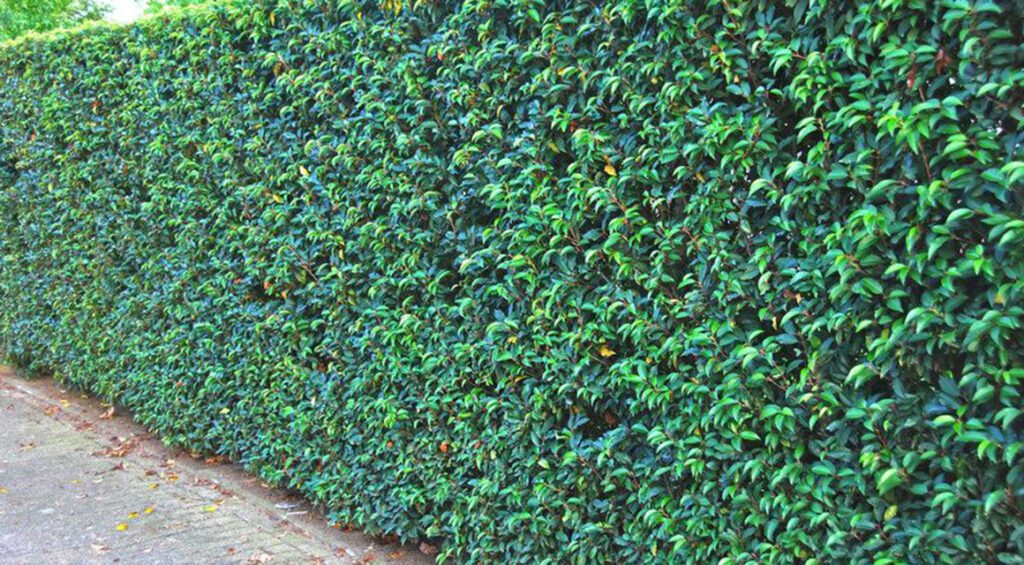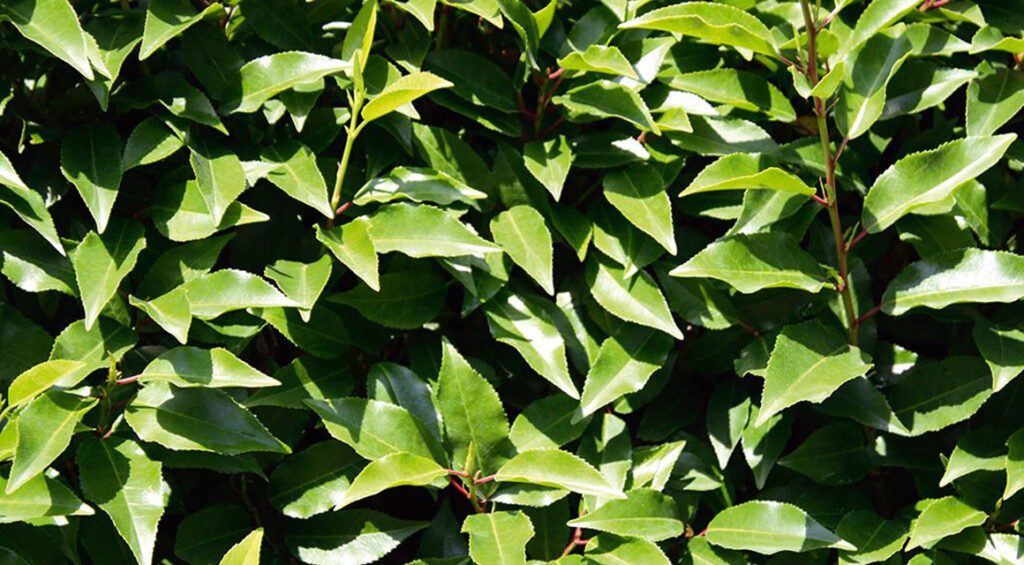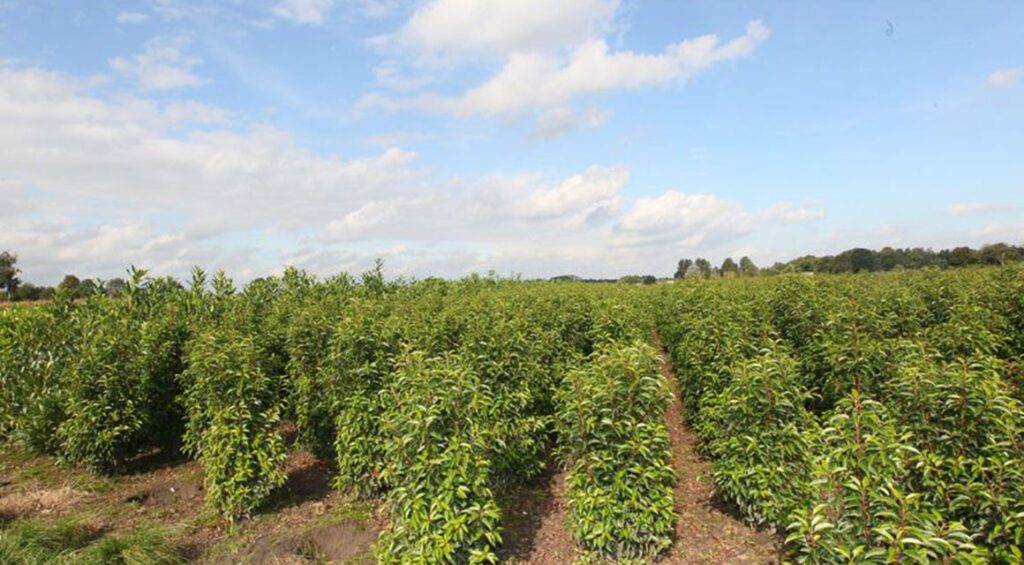Until recently, to create a cherry laurel hedge, gardeners preferred to plant a specific variety of cherry laurel in the garden. However, in recent years, the Portuguese cherry laurel (Prunus lusitanica ‘Angustifolia’) has become increasingly popular.
It is a different plant variety, but for use in hedges, the benefits of Portuguese Cherry Laurel are very similar to those of regular Cherry Laurel. In some cases, Portuguese Cherry Laurel may even be the better choice. We have listed for you the advantages of these hedge plants over the cherry laurel and other evergreen hedge plants.

You can immediately see that the Portuguese cherry laurel is simply a particularly beautiful hedge plant. This is mainly due to the leaves of the Portuguese cherry laurel, which are between 6 and 12 centimeters long and have a shiny sheen.
Contents
Especially beautiful hedge plants
You can immediately see that the Portuguese cherry laurel is simply a particularly beautiful hedge plant. This is mainly due to the leaves of the Portuguese cherry laurel, which are between 6 and 12 centimeters long and have a shiny sheen. The leaf is shaped slightly differently than that of the cherry laurel, but it has a similar appearance and therefore looks best in a similar hedge shape. In a cherry laurel hedge, it is not strict and straight, but rather loose, so that the leaves of the plants really have room. And since cherry laurel hedges are evergreen hedge plants, they can enjoy their protection all year round.
But it’s not just the foliage that makes Portuguese cherry laurel so valuable. The flower of Prunus lusitanica is also particularly graceful. It is even more graceful than on most cherry laurel plants. Although there are cultivated forms of cherry laurel that bloom a little better, such as ‘Herbergii’, the long clusters of white flowers that Portuguese cherry laurel produces each spring are especially decorative. They also attract many bees, butterflies and other beneficial insects to the garden. After flowering, Prunus lusitanica produces berries that birds love to eat.
In addition to the leaves and flowers, the branches of the Portuguese Cherry Laurel are also special. Its large leaves make it less conspicuous, but the deep pink color of the branches is very decorative.

Unlike many slow-growing cherry laurels, however, the Portuguese cherry laurel can grow several feet tall.
More options
When it comes to cherry laurels, there are really only two options: a fast-growing cherry laurel hedge that will be tall and dense enough to serve as a privacy hedge after a few years, or a slow-growing cherry laurel hedge for the front yard. Based on its growth, which ranges from 15 to 30 inches per year, one might assume that Portuguese cherry laurel belongs to the latter group. However, unlike many slow-growing cherry laurels, the Portuguese cherry laurel can grow several feet tall. Thus, a tall cherry laurel hedge that protects against unwanted views is definitely an option, but a low cherry laurel hedge is also possible.
The slower growth of the Portuguese cherry laurel also allows the hedge to be trimmed into a more formal shape. A cherry laurel hedge will never be as straight as a conifer hedge, even if you plant a slow-growing variety in the garden. However, if you prune the Portuguese cherry laurel into a slightly straighter shape after its second growth spurt in August, your cherry laurel hedge will maintain that shape throughout the winter. Some garden enthusiasts use Portuguese cherry laurel specimens as boxwood substitutes. Prunus lusitanica’s large leaves are not suitable for topiary, but you can certainly use these hedge plants for an elegant low hedge.

Less pruning
Because Portuguese cherry laurel grows more slowly than cherry laurel, a cherry laurel hedge with these plants usually requires less pruning. A Portuguese cherry laurel hedge will not get out of shape as quickly, and if you don’t want it to be too straight, annual pruning will suffice. This can be done in early spring or shortly after the second growth spurt in August. However, many garden enthusiasts choose to prune their cherry laurel twice a year. Especially if there is not too much space available in the garden, this is a good idea to keep the hedge compact.
With the Portuguese cherry laurel, however, you won’t have as much trouble with a hedge that grows too tall as with, for example, the cherry laurel ‘Rotundifolia’ or the cherry laurel ‘Novita’, which can grow more than half a meter tall in one year. Therefore, for a small garden, the Portuguese cherry laurel is the safer choice. Then the likelihood that you will soon have to start pruning again is much lower.

Does the Portuguese cherry laurel have any disadvantages?
There are no real disadvantages to the Portuguese cherry laurel, although some gardeners find it annoying how finicky young specimens of these evergreen hedge plants are. The issue is not so much soil types and locations, as in this regard Prunus lusitanica is even easier than cherry laurel, but soil moisture content. The soil in which your Portuguese cherry laurel hedge is placed should remain moist for the first few years, otherwise the plants will dry out. When the plants are fully grown, they can get by with a little less water. Always make sure there is good drainage, as too much water in the soil can lead to root rot.
It is also important to know that the leaves and fruits of Portuguese cherry laurel are poisonous to humans and most animals. Birds can eat the berries without any problems. Eating the berries of Portuguese cherry laurel is not fatal to children, but it is advisable to be careful. Therefore, after pruning your cherry laurel, always dispose of the clippings. This will prevent pets or other animals that come near your hedge from eating the clippings.

